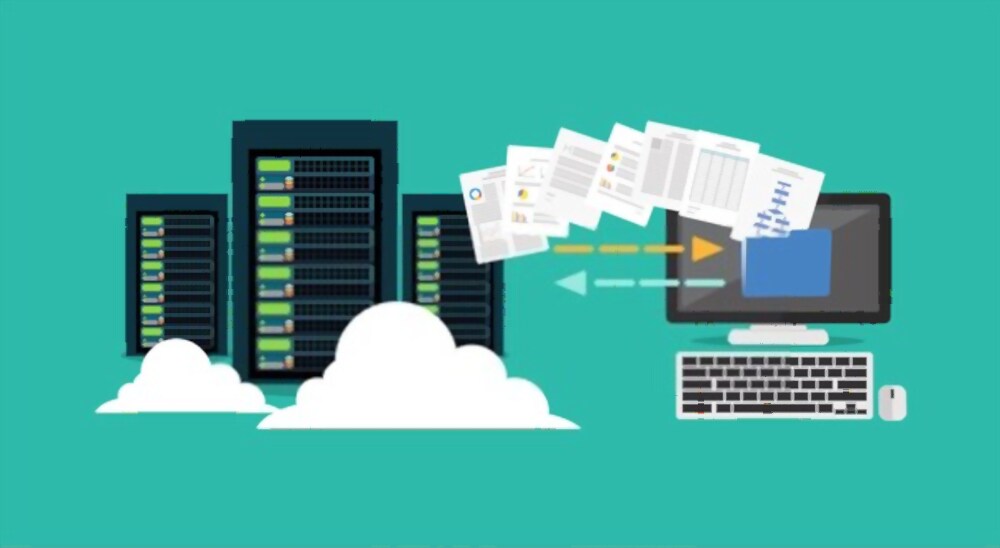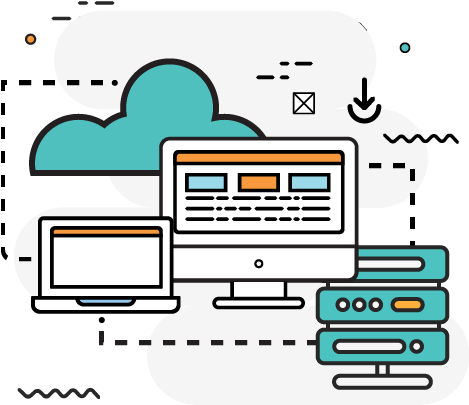Working in the cloud is increasingly topical. Right now, we are experiencing a series of changes transforming how we work. Workers have to adapt to teleworking, and companies have to equip them with the necessary resources to do so with a particular interest in working in the cloud. In this sense, we must be cautious when migrating to the cloud if we do not want to have problems later.
Also, it should be noted that many private users and even companies use this type of cloud service to:
- Share files.
- Create backup copies.
- Host documents of all kinds.
However, we can also run into problems if we don’t plan the transition properly. For this reason, in this tutorial, we will discuss what questions we should ask ourselves when migrating to the cloud. Organizations will have to take on fundamental challenges in the coming years, and they know that they must accelerate their digital strategy.
The Flexera report on technology and business challenges
Flexera is dedicated to optimizing IT assets (hardware, networks, and any physical piece owned by a company) from its facilities to the cloud. It seeks companies to gain visibility, optimize technology spending, and obtain business agility. According to its Report on the State of Investment in Technology, Flexera says that the top three investments in IT that companies should make regardless of their size are in:
- The digital transformation.
- Cybersecurity.
- The process of migration to the cloud.
Here we have a graph showing these three investments and some more:
We could add two things: improving the customer experience and Big Data analysis. Furthermore, the global cloud computing market is expected to grow substantially in the coming years. We came across several reasons companies are considering and prioritizing adopting cloud work. The main one could be cost optimization, but it is not the only one that offers more advantages.
Organizations will face significant challenges in the coming years, and they know that they must accelerate their digital strategy to stay ahead of the competition. The move to work in the cloud will provide them with elasticity, agility, flexibility, and security.
The coronavirus pandemic is another factor that has accelerated the migration process to the cloud. This situation has shown that we must learn to work remotely and safely.
The first steps in the migration to the cloud
The first problem companies face when deciding to work in the cloud is not knowing when or where to start. The first step is to understand that there is no right way to start. We can successfully correctly carry out the migration process to the cloud in several ways.
Defining what you want to achieve with this change is essential. Also, because the cloud seems inexpensive, and there is pressure to work on it, organizations sometimes make the wrong decisions. A prevalent one is to spend money on a large number of functions that you never use. In this sense, good planning, being clear about what you want to achieve, and delimiting the needed resources is an acceptable policy.
Models for implementing the cloud migration process
Companies that want to start working in the cloud often do not know where to start; one of the first things they have to decide is the model they will use to implement working in the cloud. One would be using a public cloud; here, companies share the server space. Most IT services are based on it. It is more secure than the Internet and less expensive. A third party is in charge of running the cloud infrastructure. Thus, working this way, we obtain easy maintenance, fast scalability, and high uptime.
On the other hand, we have a private cloud designed for use only by a company. The data center for this type of model can be located on your premises or off-site. It should be noted that companies use it to host highly confidential information, and it is also expensive.
The third available avenue is the hybrid cloud, a combination of cloud and local models. In this case, organizations often use their local facilities to store their research, development, or confidential data. Then, they store other applications and data for the external audience in the cloud. It is a relatively less expensive model than a private cloud. This is because some resources belong to the company and are in its facilities.
What services can I hire to work in the cloud?
We can use IaaS, PaaS, and SaaS services in the migration process to the cloud, which we will describe below.
Infrastructure as a service (IaaS) involves migrating the physical infrastructure to the cloud. The best example of this model is virtual machines (VMs). Organizations often choose it based on specific security concerns and high customization.
The platform as a service (PaaS) provides an environment to support a web application without creating servers and networks and managing databases. Companies frequently use PaaS to deliver their custom applications to their end customers.
The software as a service (SaaS) makes it easy for users to use applications based on the cloud hosted by the provider. This model allows companies not to need to maintain the software on their premises. In return, they can use software managed by cloud providers at an affordable price.
Strategies and approaches to consider
One of the first things we must do is figure out which workloads need to be migrated to the cloud and why. In that sense, we must ask ourselves if everything is compatible and should be in the cloud. It would be best if you also decided the maintenance strategy for data and applications that don’t move to the cloud.
We need to determine how we want to migrate to the cloud. For example, we must decide whether we want a public, private, or hybrid cloud.
If we choose a provider to work in the cloud, we have to take our time to choose the right one. In this sense, it has to be one who understands our company’s size and organization. We must also check that it has a good rating. We must also consider what we do not need. Earlier, we talked about how organizations were wasting resources paying for functions they didn’t need.
Finally, consider what would happen if there were an information leak. For this reason, you must be prepared to record, monitor, and analyze a security incident. It must be detected as soon as possible and remedied. An event like this can cause our company to have a bad reputation, which can take a lot to recover.
Migration is not done overnight.
One essential thing to remember is that an unplanned cloud migration process always fails. The main reason for failure is the organization’s lack of planning. Migration can fail if we do not spend the time necessary to study the situation or choose the correct approach. Also, trying to go big and go too fast can be another grave mistake. Nor should we underestimate the human factor or ignore safety issues. So, a fair cloud migration process involves choosing a good partner / suitable company to help you avoid these mistakes.

